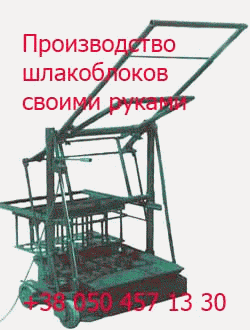The guiding principles for the preparation of plywood adhesive glue mixes are: 1. To maintain the highest possible phenolic solids content in the mixed glue (preferably in the range 30 to 40%). 2. To incorporate a cellulosic filler, such as a nutshell flour of 200 mesh or finer, in a proportion of about 20 to […]
Архивы рубрики ‘Handbook of Adhesive Technology’
Additives
 10 августа, 2015
10 августа, 2015  Malyar
Malyar A number of additives and modifiers contribute useful properties to phenolic resins used for wood gluing. Multipurpose additives are the amino resins and urea-formaldehyde and melamine-formaldehyde polymers. These include not only urea and melamine plywood adhesive resins, but also dimethylol urea, trimethylol melamine, and hexamethylol melamine. Added in amounts from 5 to 15% of phenolic […]
Properties of Phenolic Adhesives for Plywood [49]
 10 августа, 2015
10 августа, 2015  Malyar
Malyar Certain attributes of phenolic resins have been designed to give the strongest and most durable plywood bonds. Laboratory and field experience have demonstrated that certain types of PF plywood resins perform significantly better on veneers than do others. These superior resins have several properties in common: 1. They are relatively low in alkali content, generally […]
APPLICATIONS
 10 августа, 2015
10 августа, 2015  Malyar
Malyar A. Phenol-Formaldehyde Wood Binders Phenolic resins are used as binders for exterior-grade plywood and particleboard, which need the superior water resistance provided by these resins. In the manufacture of plywood, the phenolic resin adhesive is usually applied to the wood veneers by roller or extrusion coating. The coated veneer is then cross-grained, stacked, and cured […]
Physical Properties of Phenol-Formaldehyde Resins
 10 августа, 2015
10 августа, 2015  Malyar
Malyar Hardened PF resin have a specific gravity of approximately 1.2 to 1.3, a refractive index of 1.6, and a specific heat of 0.5. They are typically brown in color, and novolaks are lighter in color than resols. Resols are dark yellow, orange reddish, or brownish even when made with pure raw materials. However, if the […]
Urea Acceleration and Phenol-Urea-Formaldehyde Exterior-Grade Resins
 10 августа, 2015
10 августа, 2015  Malyar
Malyar Low condensation PF resins have been coreacted under alkaline conditions with up to 42% molar urea on phenol during resin preparation to yield PUF resins capable of faster hardening times and presenting better performance than equivalent pure PF resins prepared under identical conditions [31-34]. The reason that urea reacts with relative ease with PF resols […]
Addition of Acetals and Transacetalization Reactions
 10 августа, 2015
10 августа, 2015  Malyar
Malyar Another recent approach which has shown considerable promise in markedly decreasing the percentage of PF adhesive solids on a board has been found almost by chance. It is based on the addition to the resin of certain additives capable of decreasing the percentage of any PF resin needed for bonding while still conserving the same […]
Curing Acceleration Under Alkaline Conditions
 10 августа, 2015
10 августа, 2015  Malyar
Malyar 1. a — and p-Set Acceleration The so-called a — and p-set acceleration of curing for very alkaline PF resins for foundry core binders was pioneered in the early 1970s [22], although it had been discovered in the early 1950s [22]. In this application the addition of considerable amounts of esters or other chemicals in […]
CHEMISTRY AND TECHNOLOGY OF APPLICATION OF PHENOLIC RESIN ADHESIVES FOR WOOD
 9 августа, 2015
9 августа, 2015  Malyar
Malyar A. General Principles of Manufacture A typical phenolic resin is made in batches, in a jacketed, stainless steel reactor equipped with an anchor-type or turbine-blade agitator, a reflux condenser, vaccum equipment, and heating and cooling facilities. Molten phenol and formalin (containing 37 to 42% formaldehyde or paraformaldehyde), in molar proportions between 1:1.1 and 1:2, along […]
Metallic Ion Catalysis and Reaction Orientation
 9 августа, 2015
9 августа, 2015  Malyar
Malyar In the pH range 3 to 7 the higher rate of curing of phenolic resins prepared by metallic ion catalysis is due to preferential ortho methylolation [17] and therefore also to the high proportion of ortho-ortho links of the uncured phenolic resins prepared by metallic ion catalysis. The faster curing rates of phenolic resins prepared […]
 Опубликовано в рубрике
Опубликовано в рубрике 
